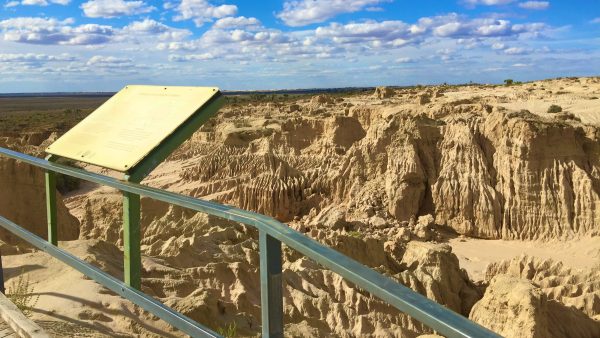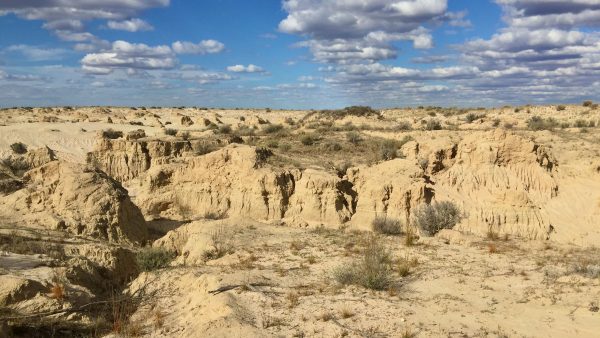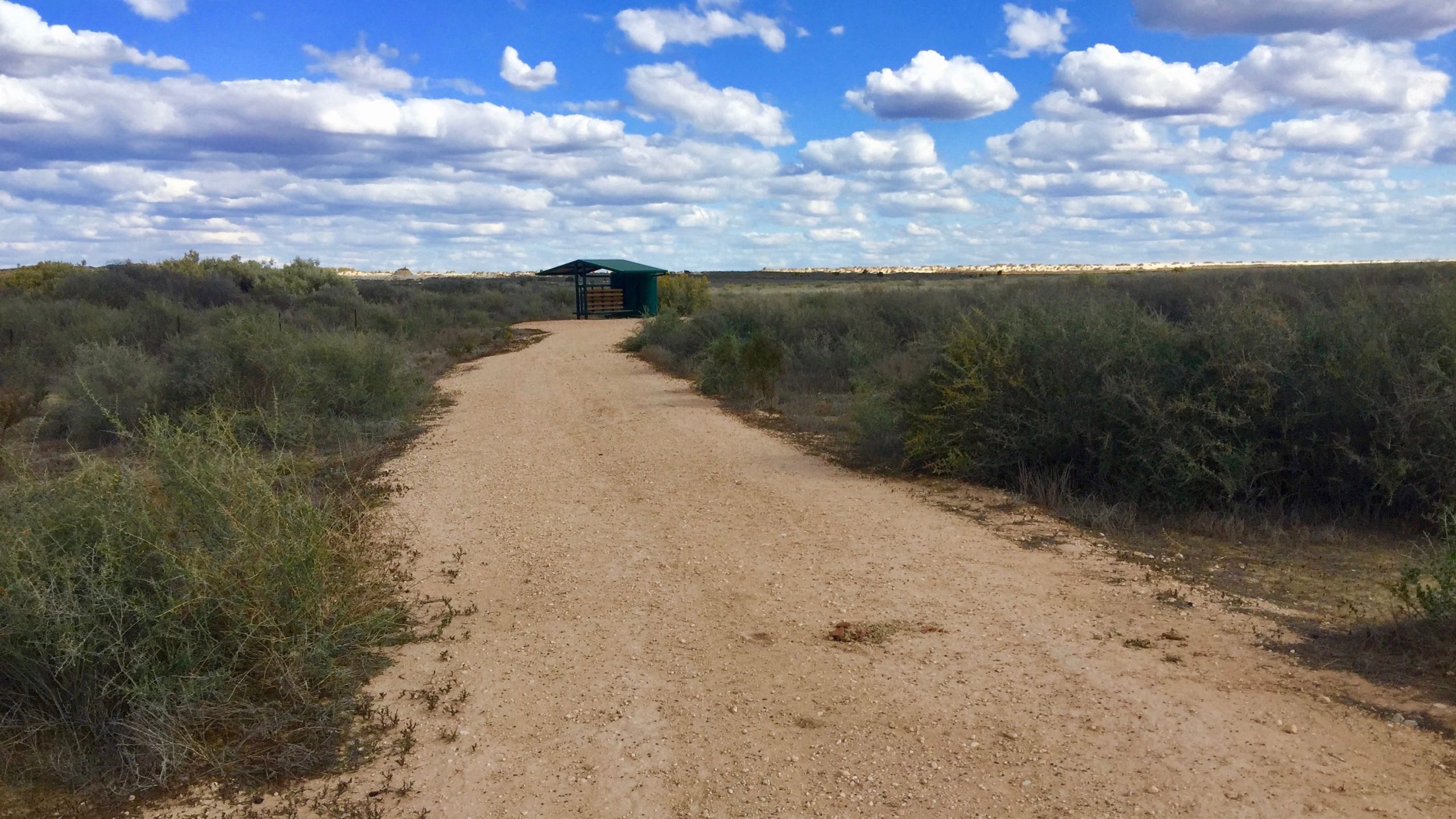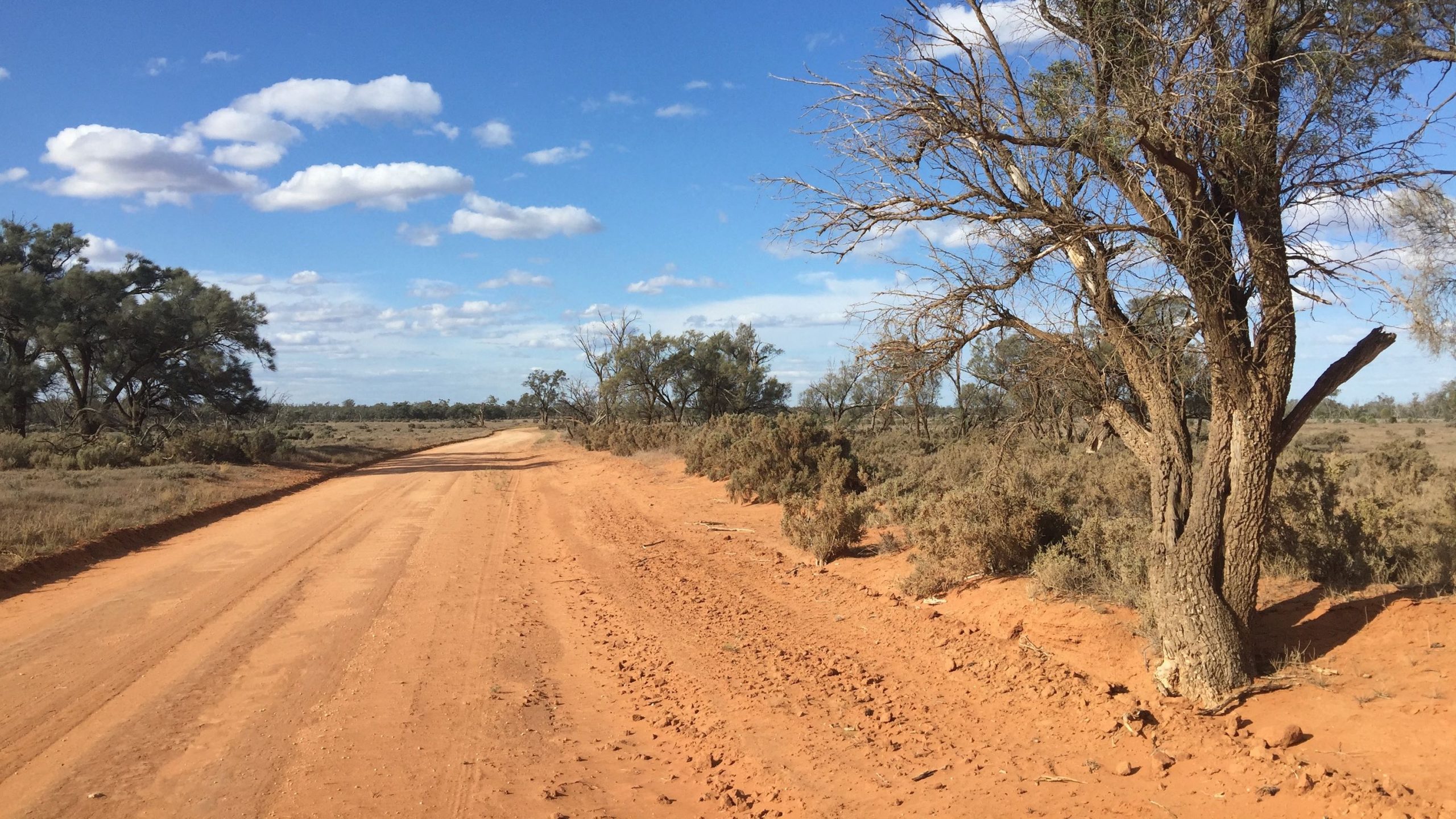The Walls of China in Mungo National Park, located in southwestern New South Wales, Australia, are a remarkable geological formation with deep cultural and historical significance for Aboriginal Australians.
These natural structures, also known as the Lunette, are not actually walls but rather a series of eroded sand and clay dunes stretching for over 30 kilometres along the eastern shore of the dried Lake Mungo.
The formation of the Walls of China dates back approximately 120,000 years. During periods of higher rainfall, the area was a lush landscape with a large freshwater lake. As the climate became drier over millennia, the lake began to evaporate. Strong winds blew sediment from the lakebed to the eastern shore, gradually building up layers of sand and clay. This process, occurring over tens of thousands of years, created the distinctive crescent-shaped dunes we see today.
The area holds immense cultural importance for the local Aboriginal peoples, particularly the Barkandji, Mutthi Mutthi, and Ngiyampaa. Archaeological evidence suggests that Aboriginal people have lived in the Willandra Lakes region, which includes Mungo National Park, for at least 50,000 years. This makes it one of the oldest sites of human occupation in Australia and indeed the world.
In 1968, the area gained international attention when archaeologists discovered the cremated remains of a woman, now known as Mungo Lady. These remains, dated to around 40,000 years old, represent the oldest known cremation in the world. A few years later, in 1974, the partial skeleton of Mungo Man was found, estimated to be about 42,000 years old. These discoveries revolutionised our understanding of early human migration and the sophistication of ancient Aboriginal cultures.
The Walls of China have also yielded a wealth of other archaeological treasures, including stone tools, animal bones, and hearths. These artefacts provide valuable insights into the daily lives, diets, and technologies of ancient Aboriginal inhabitants.
The erosion that shaped the Walls of China continues to expose new layers of history. However, this same process also threatens the preservation of the site. Careful management strategies have been implemented to protect this unique landscape while allowing for scientific research and respectful tourism.
In recognition of its outstanding universal value, the Willandra Lakes Region, including the Walls of China, was inscribed on the UNESCO World Heritage List in 1981. This listing acknowledges both the geological significance of the area and its importance in understanding human history and evolution.
Today, the Walls of China stand as a testament to the deep connection between Aboriginal Australians and their land, offering visitors a glimpse into an ancient world and a chance to reflect on the incredible longevity of Indigenous Australian culture.










[…] the haunting beauty of the Walls of China at […]